pearl harbor
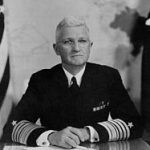
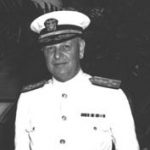 November 25, 1941, while not the date that would live in infamy, is a date that, in some ways, lives in infamy too. It was on this day that Admiral Harold R. Stark, United States Chief of Naval Operations, told Admiral Husband E. Kimmell, commander of the United States Pacific Fleet at Pearl Harbor, that both President Roosevelt and Secretary of State Cordell Hull thought that a Japanese surprise attack is a distinct possibility. It was their thought that the attack might possibly happen on the following Monday, because the Japanese were notorious for attacking without warning, President Franklin D. Roosevelt had informed his Cabinet. “We must all prepare for trouble, possibly soon,” he telegraphed British Prime Minister Winston Churchill.
November 25, 1941, while not the date that would live in infamy, is a date that, in some ways, lives in infamy too. It was on this day that Admiral Harold R. Stark, United States Chief of Naval Operations, told Admiral Husband E. Kimmell, commander of the United States Pacific Fleet at Pearl Harbor, that both President Roosevelt and Secretary of State Cordell Hull thought that a Japanese surprise attack is a distinct possibility. It was their thought that the attack might possibly happen on the following Monday, because the Japanese were notorious for attacking without warning, President Franklin D. Roosevelt had informed his Cabinet. “We must all prepare for trouble, possibly soon,” he telegraphed British Prime Minister Winston Churchill.
Kimmel’s command was at the mid-Pacific base at Oahu, which included, Pearl Harbor. At the time he received the “warning” from Stark, he was negotiating with Army Lieutenant General Walter C. Short, commander of all United States forces at Pearl Harbor, about sending United States warships out from Pearl Harbor in order to reinforce Wake and Midway Islands, along with the Philippines, which were considered possible Japanese targets. But the Army had no anti aircraft artillery to spare. War worries struck due to an intercepted Japanese diplomatic message, which gave November 25 as a deadline of sorts. If Japanese diplomacy had failed to convince the Americans to revoke the economic sanctions against Japan, “things will automatically begin to happen,” the message related. Those “things” were becoming obvious, in the form of Japanese troop movements off Formosa (Taiwan), toward Malaya. In reality, they were headed for Pearl Harbor, as was the Japanese First Air Fleet, but no one had guessed that was the intended target.
Despite the fact that so many in positions of command anticipated a Japanese attack, they had all failed to figure out that Hawaii was the target. When the attack came, they were all taken by complete and deadly surprise. Maybe they should have known, especially given the failure of diplomacy, when Japan refused United States demands to withdraw from both the Axis pact and occupied territories in China and Indochina, but no 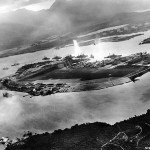
 one guessed Pearl Harbor was the target. Unfortunately they assumed Midway or Wake islands, because they seemed to be more strategic targets, and they expected that Japan would need those locations to have a chance at victory. I don’t know why the Japanese decided on Pearl Harbor, but perhaps it was a way of attacking in the heart of the United States…or as much as they felt they could. Whatever the case may be, the United States came back with a vengeance, and the Japanese would regret their attack on Pearl Harbor, because they would lose the war, date that would live in infamy…or not.
one guessed Pearl Harbor was the target. Unfortunately they assumed Midway or Wake islands, because they seemed to be more strategic targets, and they expected that Japan would need those locations to have a chance at victory. I don’t know why the Japanese decided on Pearl Harbor, but perhaps it was a way of attacking in the heart of the United States…or as much as they felt they could. Whatever the case may be, the United States came back with a vengeance, and the Japanese would regret their attack on Pearl Harbor, because they would lose the war, date that would live in infamy…or not.
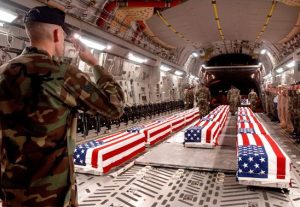 Memorial Day…the day we set aside to remember the heroes of our wars, who paid the ultimate price for the freedoms we hold dear. The men and women who were killed in the attack on Pearl Harbor come to mind, as do those lost on the beaches of Normandy, but there are so many others. From the fliers, to the foot soldiers, to the sailors…men and women, from the Revolutionary War, to the War on Terror, have set aside their goals in life, left their families at home, pushed back their fears, and done their duty to serve their country, and for so many of them, it was a one way ticket over there. They fought and died so that someone they didn’t know could be free and have the rights that so many take for granted. They looked away when they were protested, but deep down they wondered why people didn’t understand. They tried not to watch the news of death and destruction. They just did their job, until they lost their lives in a war they wished had never started.
Memorial Day…the day we set aside to remember the heroes of our wars, who paid the ultimate price for the freedoms we hold dear. The men and women who were killed in the attack on Pearl Harbor come to mind, as do those lost on the beaches of Normandy, but there are so many others. From the fliers, to the foot soldiers, to the sailors…men and women, from the Revolutionary War, to the War on Terror, have set aside their goals in life, left their families at home, pushed back their fears, and done their duty to serve their country, and for so many of them, it was a one way ticket over there. They fought and died so that someone they didn’t know could be free and have the rights that so many take for granted. They looked away when they were protested, but deep down they wondered why people didn’t understand. They tried not to watch the news of death and destruction. They just did their job, until they lost their lives in a war they wished had never started.
 Most of us knew very few soldiers who lost their lives in defense of their country, and some of us may not have known any at all, even though some of our ancestors might have been casualties of a war. I think that sometimes the families of the lost feel alone in their grief. Unless someone has been in that position, they have a difficult time really understanding the depth of the loss. People try to be understanding, imagining how they would feel if it was them, but the reality is that our imaginations are not that good. Those who have lost a loved one to war can never forget the loss or the grief they feel. Grief has no timetable, and some pain just never goes away. No pain is more horrible than losing your child, and losing them in war, seriously compounds that pain.
Most of us knew very few soldiers who lost their lives in defense of their country, and some of us may not have known any at all, even though some of our ancestors might have been casualties of a war. I think that sometimes the families of the lost feel alone in their grief. Unless someone has been in that position, they have a difficult time really understanding the depth of the loss. People try to be understanding, imagining how they would feel if it was them, but the reality is that our imaginations are not that good. Those who have lost a loved one to war can never forget the loss or the grief they feel. Grief has no timetable, and some pain just never goes away. No pain is more horrible than losing your child, and losing them in war, seriously compounds that pain.
Memorial Day, or Decoration Day as it was first called, started three years after the Civil War ended, on May 5,  1868. It was established by the head of an organization of Union veterans…the Grand Army of the Republic. Decoration Day was a time for the nation to decorate the graves of the war dead with flowers. Major General John A Logan declared that Decoration Day should be observed on May 30. It is believed that date was chosen because flowers would be in bloom all over the country. The first large observance was held that year at Arlington National Cemetery, across the Potomac River from Washington, DC. It was a day for all citizens to remember the sacrifice of the brave fallen heroes. And to let the families know that their fallen soldier would ever be forgotten. In honor of all the fallen, may you rest in peace. Thank you for your great sacrifice. Your nation is grateful.
1868. It was established by the head of an organization of Union veterans…the Grand Army of the Republic. Decoration Day was a time for the nation to decorate the graves of the war dead with flowers. Major General John A Logan declared that Decoration Day should be observed on May 30. It is believed that date was chosen because flowers would be in bloom all over the country. The first large observance was held that year at Arlington National Cemetery, across the Potomac River from Washington, DC. It was a day for all citizens to remember the sacrifice of the brave fallen heroes. And to let the families know that their fallen soldier would ever be forgotten. In honor of all the fallen, may you rest in peace. Thank you for your great sacrifice. Your nation is grateful.

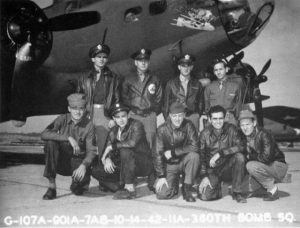 Every war has its casualties…it is an inevitable part of battle. World War II was no different, and in fact it was the deadliest war in world history, with casualties between 40,000,000 and 72,000,000. On average, 6,600 American servicemen died per month during World War II, about 220 a day. By the end of the war, over 40,000 airmen were killed in combat theatres and another 18,000 wounded. Some 12,000 missing men were declared dead, including a number liberated by the Soviets but never returned. More than 41,000 were captured, half of the 5,400 held by the Japanese died in captivity, compared with one tenth in German hands. As with any part of the war, being an airman in World War II was simply a very dangerous business.
Every war has its casualties…it is an inevitable part of battle. World War II was no different, and in fact it was the deadliest war in world history, with casualties between 40,000,000 and 72,000,000. On average, 6,600 American servicemen died per month during World War II, about 220 a day. By the end of the war, over 40,000 airmen were killed in combat theatres and another 18,000 wounded. Some 12,000 missing men were declared dead, including a number liberated by the Soviets but never returned. More than 41,000 were captured, half of the 5,400 held by the Japanese died in captivity, compared with one tenth in German hands. As with any part of the war, being an airman in World War II was simply a very dangerous business.
Over the years of World War II, there were many stories of men falling from their planes either from attack or accident. I’m sure some were just stories, but this is a true story. Staff Sergeant Alan Magee was born on January 13, 1919 in Plainfield, New Jersey, the youngest of six children of Resue and Doretta (Winn) Magee. Alan grew to be a short 5’7″ tall. That is short for a man, but slightly tall for a ball turret gunner on a B-17 bomber. Like many men, Alan joined the service right after the attack on Pearl Harbor. He was assigned as a ball turret gunner with the 303rd Bomb Group, 360th Squadron stationed at RAF Molesworth, which is a Royal Air Force station located near Molesworth, Cambridgeshire, England.
At 5’7″ inches, Magee was barely small enough to fit in the B-17’s ball turret. The ball turret was a cramped, donut shaped plastic glass and metal turret on the belly of the bomber. It was such a tight fit that a gunner’s knees were practically against his chest. Magee had to leave his parachute on the deck of the four engine Flying Fortress. That fact would prove to be detrimental. On January 3, 1943, Magee was assigned to a B-17, nicknamed “Snap! Crackle! Pop!” They were on a bombing run during the daytime over Saint Nazaire, France, also known at “Flack City,” when German fighters shot off a part of the right wing, causing the plane to enter a deadly spin. This was Magee’s seventh mission. That was an amazing feat in and of itself, because the life expectancy of a ball turret gunner in World War II was 12 minutes. It was really considered a suicide position on the plane. Oddly too, Magee was one of the oldest members of the 10 man crew at 24 years. The pilot, Captain Arthur Adams, was only 19, and this was only his third combat mission.
Magee was wounded in the attack, but managed to escape the ball turret, scrambling back into the cabin for his parachute. The only problem was that his parachute had been damaged and was totally useless, so having no other choice, Magee leapt from the spiraling plane without his parachute, losing consciousness rapidly because of the altitude. During his fall from the plane, Magee asked God to save his life. “I don’t wish to die because I know nothing of life,” was his appeal to God. Then, he totally lost consciousness and crashed through the glass roof of the Saint Nazaire train station. Eyewitnesses watched in horror as Magee came through the skylight. When he regained consciousness, Magee said to his captors: “Thank God I’m alive.” Magee’s injuries included 28 shrapnel wounds. A lung and kidney were hit. His nose and an eye were ripped open. His broken bones included his right leg and ankle. A right arm was nearly severed. The Germans decided that anyone who could miraculously survive such a fall deserved “real special attention.” It is thought that he fell over four miles before crashing through the glass roof. Some said they thought that the glass roof lessened Magee’s impact, and rescuers found him still alive on the floor of the station. It is my belief that God sent His angels to break the fall, because a 20,000 foot into a soft field can be fatal, so it is a miracle that he fell through a glass roof onto a concrete floor and lived. Magee regained consciousness in the first aid station before being transferred to the local hospital. “I owe the German military doctor who treated me a debt of gratitude,” said Magee. “He told me, ‘We are enemies, but I am first a doctor and I will do my best to save your arm.’” The doctor saved Magee’s arm and tended his other injuries, but unfortunately, Magee never found out the doctor’s name, so he couldn’t thank him. Staff Sargent Magee was taken as a POW and given continued medical treatment for his injuries by his captors. Magee was rescued in May 1945, and received the Air Medal for meritorious conduct and the Purple Heart. When the war was over, Magee got his pilot’s license and enjoyed flying. He worked a variety of jobs in the airline industry, and retired in 1979. He then moved to Northern New Mexico.
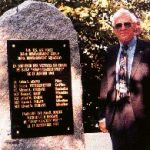
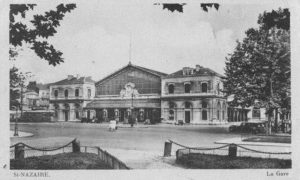 The people of Saint Nazaire, France honored Magee and the crew of his bomber on January 3rd, 1993 by erecting a six foot tall memorial to them. Alan Magee passed away in San Angelo, Texas on December 20th, 2003, at 84 from stroke and kidney failure. With the German doctors’ help, Magee fully recovered. Magee later hiked and backpacked and “led a pretty good life.” Two of his crewmen also survived. In all, 75 airmen died, seven U.S. planes were destroyed and 47 were damaged that day.
The people of Saint Nazaire, France honored Magee and the crew of his bomber on January 3rd, 1993 by erecting a six foot tall memorial to them. Alan Magee passed away in San Angelo, Texas on December 20th, 2003, at 84 from stroke and kidney failure. With the German doctors’ help, Magee fully recovered. Magee later hiked and backpacked and “led a pretty good life.” Two of his crewmen also survived. In all, 75 airmen died, seven U.S. planes were destroyed and 47 were damaged that day.
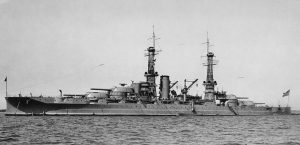 Most people know that the USS Arizona was one of the ships that was bombed when the Japanese attacked Pearl Harbor on December 7, 1941. The USS Arizona’s sinking took with it, 1,177 men…almost half of the total of 2,403 people killed at Pearl Harbor. The Arizona was one of 20 American ships and more than 300 airplanes lost that day. We know that the attack woke the sleeping giant that is the United States, and we joined World War II with the Allies to stop the tyranny that was Japan and later Germany and Italy. Most people know that the Allies were successful in World War II, and after four long years and the loss of over 400,000 lives, the war was over. There are a few facts about the USS Arizona that many people might not know, however.
Most people know that the USS Arizona was one of the ships that was bombed when the Japanese attacked Pearl Harbor on December 7, 1941. The USS Arizona’s sinking took with it, 1,177 men…almost half of the total of 2,403 people killed at Pearl Harbor. The Arizona was one of 20 American ships and more than 300 airplanes lost that day. We know that the attack woke the sleeping giant that is the United States, and we joined World War II with the Allies to stop the tyranny that was Japan and later Germany and Italy. Most people know that the Allies were successful in World War II, and after four long years and the loss of over 400,000 lives, the war was over. There are a few facts about the USS Arizona that many people might not know, however.
Twenty three sets of brothers died aboard USS Arizona. In all there were 37 confirmed pairs or trios of brothers assigned to the ship. Of the 77 men in those sets, 62 were killed. Only one full set of brothers survived. Kenneth and Russell Warriner survived because Kenneth was away at flight school in San Diego, and Russell, while badly wounded, lived. Also on board were father and son, Thomas Free and his son William who served and were killed aboard the Arizona that day. While no regulation exists, US officials discouraged siblings serving on the same ship after the Pearl Harbor attack. In addition to these men who died, the USS Arizona’s entire band, all 21 members, known as US Navy Band Unit (NBU) 22, were lost in the attack. Most of its members were up on deck preparing to play music for the daily flag raising ceremony when the attack began. They instantly moved to man their battle positions beneath the ship’s gun turret. It was the only time in American history that an entire military band died in action. In the years following the attack, and following the decision to leave the dead in the USS Arizona, it was decided that a memorial should be placed there. That is a known fact, but what I didn’t know was that in March 1961, Elvis Presley, who had recently finished a two year stint in the US Army, performed a benefit concert at 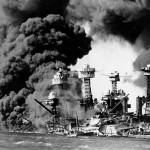
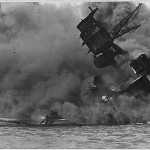 Pearl Harbor’s Block Arena that raised over $50,000. That was more than 10 percent of the USS Arizona Memorial’s final cost. The monument was officially dedicated on May 30, 1962.
Pearl Harbor’s Block Arena that raised over $50,000. That was more than 10 percent of the USS Arizona Memorial’s final cost. The monument was officially dedicated on May 30, 1962.
One of the most surprising facts about the Arizona, however, is related to the fuel. The day before the Pearl Harbor attack, the Arizona had taken on a full load of fuel…nearly 1.5 million gallons, because it was set to make a trip to the mainland later that month. When the Japanese bombers attacked, that fuel played a major part in the explosions and raging fire that followed the bombing. After the fires were put out, there were 500,000 gallons of fuel left in the ship. Now, 75 years later, the Arizona continues to spill up to 9 quarts of oil into the harbor each day. In the mid-1990s, concerns for the environment led the National Park Service to commission a series of site studies to determine the long term effects of the oil leakage. Some scientists have warned of a possible “catastrophic” eruption of oil from the wreckage, which they believe would cause extensive damage to the Hawaiian shoreline and disrupt US naval functions in the area. They continue to monitor the deterioration of the wreck site but are reluctant to perform extensive repairs or modifications due to the Arizona’s role as a “war grave.” In fact, the oil that often coats the surface of the water surrounding the ship has added an emotional gravity for many who visit the memorial and is sometimes referred to as the “tears of the Arizona” or “black tears.”
As surprising as that is, there is still one more fact that many people didn’t know. The bonds between the crewmembers of Arizona have lasted far beyond the loss of the ship on December 7, 1941. Since 1982, the US Navy has allowed survivors of USS Arizona to be interred in the ship’s wreckage upon their deaths. After a full military funeral at the Arizona memorial, the cremated remains are placed in an urn and then deposited by divers beneath one of the Arizona’s gun turrets. More than 30 Arizona crewmen who survived Pearl Harbor  have chosen the ship as their final resting place. Crewmembers who served on the ship prior to the attack may have their ashes scattered above the wreck site, and those who served on other vessels stationed at Pearl Harbor on December 7, 1941, may have their ashes scattered above their former ships. As of November 2011, only 18 of the 355 crewmen who survived the bombing of USS Arizona are known to be alive. I knew that the Pearl Harbor attack had a deep impact on the lives of the survivors, but I guess I didn’t fully understand that it was a life changing event, and it would never really leave them.
have chosen the ship as their final resting place. Crewmembers who served on the ship prior to the attack may have their ashes scattered above the wreck site, and those who served on other vessels stationed at Pearl Harbor on December 7, 1941, may have their ashes scattered above their former ships. As of November 2011, only 18 of the 355 crewmen who survived the bombing of USS Arizona are known to be alive. I knew that the Pearl Harbor attack had a deep impact on the lives of the survivors, but I guess I didn’t fully understand that it was a life changing event, and it would never really leave them.

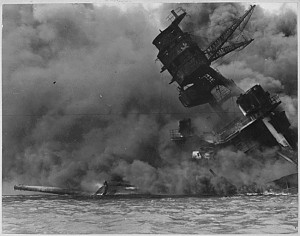 Whether people remember the date or not, I think that most people know that the attack on Pearl Harbor was what took the United States into World War II. Negotiations with Japan had broken down, and President Franklin Roosevelt and his advisors knew that in all probability, the Japanese would attack the United States. Still, nothing was done to increase security at key points, like the naval base at Pearl Harbor, Hawaii. This was especially an important base, because of it’s location. It was a place that early warning could have been given to the mainland, or where an attack could have been thwarted, but as often happens in government, the leaders don’t want to scare the nation, so they try to keep things from them…a plan the is fraught with folly. The best weapon a nation can possibly have is preparedness.
Whether people remember the date or not, I think that most people know that the attack on Pearl Harbor was what took the United States into World War II. Negotiations with Japan had broken down, and President Franklin Roosevelt and his advisors knew that in all probability, the Japanese would attack the United States. Still, nothing was done to increase security at key points, like the naval base at Pearl Harbor, Hawaii. This was especially an important base, because of it’s location. It was a place that early warning could have been given to the mainland, or where an attack could have been thwarted, but as often happens in government, the leaders don’t want to scare the nation, so they try to keep things from them…a plan the is fraught with folly. The best weapon a nation can possibly have is preparedness.
December 7, 1941 was a beautiful Sunday in Hawaii, 75 years ago today, and many military personnel had been given passes to attend church services off base. At 7:02am, two radar operators spotted large groups of aircraft in flight toward the island from the north, but with a flight of B-17s expected from the United States at the time, they were told not to sound an alarm. At 7:55am Hawaii time, a Japanese dive bomber bearing the red symbol of the Rising Sun of Japan on its wings appeared out of the clouds above the island of Oahu. Behind it came a swarm of 360 Japanese warplanes, descending on the US naval base at Pearl Harbor in a ferocious attack. The United States was unprepared, and the surprise attack struck a critical blow against the US Pacific fleet drawing the United States irrevocably into World War II.
In an attack that lasted just under two hours, the Japanese rendered much of the Pacific fleet useless, including five of eight battleships, three destroyers, and seven other ships that were sunk or severely damaged, and more than 200 aircraft that were destroyed. A total of 2,400 Americans were killed and 1,200 were wounded, many while scrambling in a valiant attempt to repulse the attack. Japan’s losses were some 30 planes, five midget submarines, and fewer than 100 men. Fortunately for the United States, all three Pacific fleet carriers were out at sea on training maneuvers. These giant aircraft carriers would exact their revenge against Japan six months later at the Battle of Midway, reversing the tide against the previously invincible Japanese navy in a spectacular victory…a beating that Japan would not forget.
The day after Pearl Harbor was bombed, President Roosevelt appeared before a joint session of Congress and declared, “Yesterday, December 7, 1941…a date which will live in infamy…the United States of America was suddenly and deliberately attacked by naval and air forces of the Empire of Japan.” After a brief and forceful speech, he asked Congress to approve a resolution recognizing the state of war between the United States and Japan. The Senate voted for war against Japan by 82 to 0, and the House of Representatives approved the resolution by a vote of 388 to 1. The sole dissenter was Representative Jeannette Rankin of Montana, a devout pacifist, who had also cast a dissenting vote against the United States entrance into World War I. Three days later, Germany and Italy declared war against the United States, and the United States government responded in kind. The American contribution to the successful Allied war effort spanned four long years and cost more than 400,000 American lives.
I have never personally been to Pearl Harbor, but I am told that the Arizona Memorial, that stands above the sunken ship, that is grave to the brave men who died inside, displays a feeling of sadness, and of being on 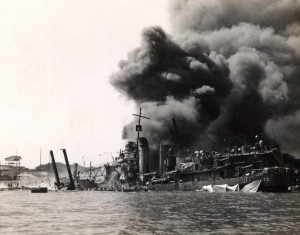
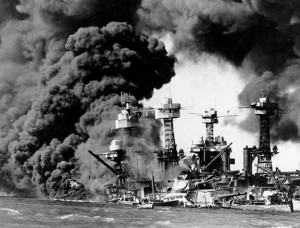 hallowed ground. It is a feeling I felt when I walked through the cemetery at Gettysburg. The men who died there…who bravely gave the ultimate sacrifice deserve the respect of those who would come to visit. I do not believe in ghosts, but I do believe that God gives cemeteries, in general, and military cemeteries especially an air of quiet honor reserved for the dead. Let us never forget that our greatest weapon in all areas of life is preparedness.
hallowed ground. It is a feeling I felt when I walked through the cemetery at Gettysburg. The men who died there…who bravely gave the ultimate sacrifice deserve the respect of those who would come to visit. I do not believe in ghosts, but I do believe that God gives cemeteries, in general, and military cemeteries especially an air of quiet honor reserved for the dead. Let us never forget that our greatest weapon in all areas of life is preparedness.
 Underestimating…it can be inconvenient, sad, or devastating…but, it’s always a mistake. On September 24, 1941, the United States was right in the middle of underestimating Japan. Relations between the United States and Japan were deteriorating. Japan had occupied Indo-China and was now implicitly menacing the Philippines, a country the United States was protecting. The American reaction was to seize all Japanese assets in the United States and closed the Panama Canal to any Japanese shipping. Then in September of 1941, Roosevelt issued a statement, which had been drafted by British Prime Minister Winston Churchill, that threatened war between the United States and Japan should the Japanese make any further movement in territories in Southeast Asia or the South Pacific.
Underestimating…it can be inconvenient, sad, or devastating…but, it’s always a mistake. On September 24, 1941, the United States was right in the middle of underestimating Japan. Relations between the United States and Japan were deteriorating. Japan had occupied Indo-China and was now implicitly menacing the Philippines, a country the United States was protecting. The American reaction was to seize all Japanese assets in the United States and closed the Panama Canal to any Japanese shipping. Then in September of 1941, Roosevelt issued a statement, which had been drafted by British Prime Minister Winston Churchill, that threatened war between the United States and Japan should the Japanese make any further movement in territories in Southeast Asia or the South Pacific.
The Japanese had dominated Japanese foreign affairs for a long time…probably the biggest problem. The US Secretary of State, and Japan’s counterpart were trying to  ease tensions between the two countries, but Hideki Tojo, the minister of war, later to become the prime minister, had not intentions of leaving the territories Japan had captured. He viewed the Americans as a “threat” to his plan, and considered their attempts an ultimatum. So began his plans to strike the first blow in a Japanese-American confrontation…the bombing of Pearl Harbor.
ease tensions between the two countries, but Hideki Tojo, the minister of war, later to become the prime minister, had not intentions of leaving the territories Japan had captured. He viewed the Americans as a “threat” to his plan, and considered their attempts an ultimatum. So began his plans to strike the first blow in a Japanese-American confrontation…the bombing of Pearl Harbor.
On this day, September 24, 1941, Japanese consul in Hawaii, Nagai Kita was instructed to divide Pearl Harbor into five zones. He was also told to determine the number of warships moored in each zone and report back to Japan. The Japanese did not know that the Americans had intercepted the message. The problem was that it had to be sent back to Washington DC for decrypting. At that time in history, flights from  Hawaii to the mainland were infrequent. Remember that we didn’t have jumbo jets then. Most people traveled by ship, and so did the mail. The coded message was sent by sea, and finally reached the capital, but with staffing shortages, the decrypting was delayed until mid-October. It looked like a discarded plan the Japanese had, and since nothing had happened at Pearl Harbor, apparently the Japanese must have determined that it would not work. It was presumed to be an old message that held no possible importance after so long a time had passed. On December 7, 1941, the Americans would realize just how wrong they had been. With the bombing of Pearl Harbor, the importance of the message and the plan would be revealed.
Hawaii to the mainland were infrequent. Remember that we didn’t have jumbo jets then. Most people traveled by ship, and so did the mail. The coded message was sent by sea, and finally reached the capital, but with staffing shortages, the decrypting was delayed until mid-October. It looked like a discarded plan the Japanese had, and since nothing had happened at Pearl Harbor, apparently the Japanese must have determined that it would not work. It was presumed to be an old message that held no possible importance after so long a time had passed. On December 7, 1941, the Americans would realize just how wrong they had been. With the bombing of Pearl Harbor, the importance of the message and the plan would be revealed.

 Located in the middle of Pearl Harbor is an island 335 acres in size. In Hawaii’s early days, it was known as Mokuumeume, meaning Island of Strife. It amazes me just how close that name is to the reality that is the island that is now known as Ford Island. I don’t think that strife is a constant companion of the island, but on this day, December 7, 1941…the date that will live in infamy, Ford Island was at center stage as one of the worst attacks in history took place on American soil. The participants, from the American side anyway, would have most certainly have chosen not to be there…if they had been given a choice. The island had changed hands several times, before finally ending up as a part of the military installation that was Pearl Harbor.
Located in the middle of Pearl Harbor is an island 335 acres in size. In Hawaii’s early days, it was known as Mokuumeume, meaning Island of Strife. It amazes me just how close that name is to the reality that is the island that is now known as Ford Island. I don’t think that strife is a constant companion of the island, but on this day, December 7, 1941…the date that will live in infamy, Ford Island was at center stage as one of the worst attacks in history took place on American soil. The participants, from the American side anyway, would have most certainly have chosen not to be there…if they had been given a choice. The island had changed hands several times, before finally ending up as a part of the military installation that was Pearl Harbor.
Every year, as Pearl Harbor Remembrance Day comes around, I try to write a story about that dreadful day, and this year, while looking at Pearl Harbor on Google Earth, my thoughts turned to that little island that was at the center of the attack. How must those men have felt? Everything happened so fast. There wasn’t even time to get the planes in the air. While the ships were being bombed around them, the pilots, mechanics, and airfield crew could only stand around watching…and dodging bullets. Of course, for most of them, that was impossible. The death toll that horrific day was 2403. In addition, there were 1178 people wounded. The emotional toll was beyond the imagination. This was the event that finally brought the United States into World War II.
I began to wonder what the people who were there were thinking as the events of the attack unfolded. There was no way to get off the island. If they had tried, they would surely have been killed. There were bombs going off on all sides of the island. Ships were sinking, airplanes were destroyed, and buildings were on fire or blown up. It was as if the world was coming to an end…or in reality, it was like waking up and finding yourself literally in Hell. My mind struggled to imagine how they must have felt…wishing and praying that all this was a dream and that they could be somewhere else…anywhere else. Still, they knew that it was real, and they were there, and 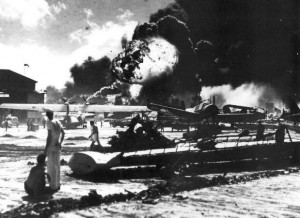
 nothing would ever be the same again. They knew that the world as they had known it, had vanished…never to exist again. Of course, our country would come back from this attack, because we are a resilient people, but we would never be the same. We were less trusting of our enemies, something I see again in this day and age of terrorism, and something I think is important.
nothing would ever be the same again. They knew that the world as they had known it, had vanished…never to exist again. Of course, our country would come back from this attack, because we are a resilient people, but we would never be the same. We were less trusting of our enemies, something I see again in this day and age of terrorism, and something I think is important.
Being too trusting of our enemies in December of 1941, was exactly what paved the way for a surprise attack on December 7, 1941, and being too trusting today could do the same thing. It is imperative that we protect our people at all costs…even if it makes us seem heartless now. As in the case of the attack on Pearl Harbor, second chances at protecting our people don’t usually come. By the time we realize that we have made a mistake, it is too late, because it has become a fatal mistake. The men and women who survived the attack on Pearl Harbor knew first hand that our enemies hate us and want nothing less that death for America. That, I believe is the valuable lesson the people who survived that horrific attack took away that fateful day, and one we all need to seriously consider today.
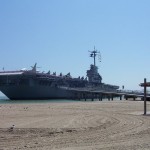 While Bob and I were in Corpus Christi, Texas in March of 2006, we had the opportunity to visit the USS Lexington, better known now, as The Blue Ghost. The ship was originally known as the Cabot, but after the USS Lexington CV-2 was lost in the Battle of the Coral Sea, she was renamed while under construction to commemorate the earlier USS Lexington. This Lexington was the fifth United States Navy ship to bear the name in honor of the Revolutionary War Battle of Lexington. In June of 1942, after the earlier USS Lexington was destroyed, workers at the shipyard submitted a request to Navy Secretary Frank Knox to change the name of a carrier currently under construction there to Lexington. Knox agreed to the proposal and Cabot was renamed as the fifth USS Lexington on 16 June 1942. She was launched on 23 September 1942, sponsored by Mrs Theodore Douglas Robinson. Lexington was commissioned on February 17, 1943.
While Bob and I were in Corpus Christi, Texas in March of 2006, we had the opportunity to visit the USS Lexington, better known now, as The Blue Ghost. The ship was originally known as the Cabot, but after the USS Lexington CV-2 was lost in the Battle of the Coral Sea, she was renamed while under construction to commemorate the earlier USS Lexington. This Lexington was the fifth United States Navy ship to bear the name in honor of the Revolutionary War Battle of Lexington. In June of 1942, after the earlier USS Lexington was destroyed, workers at the shipyard submitted a request to Navy Secretary Frank Knox to change the name of a carrier currently under construction there to Lexington. Knox agreed to the proposal and Cabot was renamed as the fifth USS Lexington on 16 June 1942. She was launched on 23 September 1942, sponsored by Mrs Theodore Douglas Robinson. Lexington was commissioned on February 17, 1943.
I can’t say for sure if this Frank Knox was any relation to my husband’s Knox ancestors, but it wouldn’t  surprise me at all, since the Knox family was into politics, and even included a connection to President James Knox Polk. While I was originally writing this because on this day, December 5, 1941, the prior USS Lexington headed out to the Battle of Midway…a battle that it never made it to, because of the Japanese attack on Pearl Harbor. That Lexington made it back to Pearl Harbor on December 13, 1941, so it was not much help. Later, the prior USS Lexington was destroyed in the Battle of Coral Sea, triggering the renaming of the USS Lexington that Bob and I saw.
surprise me at all, since the Knox family was into politics, and even included a connection to President James Knox Polk. While I was originally writing this because on this day, December 5, 1941, the prior USS Lexington headed out to the Battle of Midway…a battle that it never made it to, because of the Japanese attack on Pearl Harbor. That Lexington made it back to Pearl Harbor on December 13, 1941, so it was not much help. Later, the prior USS Lexington was destroyed in the Battle of Coral Sea, triggering the renaming of the USS Lexington that Bob and I saw.
The USS Lexington we saw was referred to as a “ghost” ship by the Japanese for her tendency to reappear after reportedly being sunk. This, coupled with the ship’s dark blue camouflage scheme, led the crew to refer to her as “The Blue Ghost”. There were rumors during the war that the ship was so badly damaged it had to be scuttled at one point, but a newly built aircraft carrier was immediately deployed with the same name, in an effort to demoralize the Japanese. I’m sure the whole situation was a serious frustration to the Japanese, but for Bob and me the legend that ship had 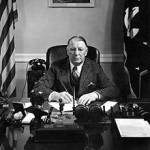 become was something we found quite interesting.
become was something we found quite interesting.
That said, I now find something new to draw my interest…namely Navy Secretary Frank Knox. One thing I have noticed is that in many families, certain names seem to be used over and over. In Bob’s family, there is a Frank Knox, and in that lineage there are Williams and Johns. The same is the case with Navy Secretary Frank Knox’s lineage. For that reason, I expect that a connection exists, and with a little work, I think I will find it, if it exists. I like the challenges that come from trying to connect the missing links in our family, and when I can tie it to something I have personally seen, it is an even more exciting quest.

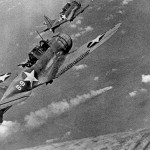 The Japanese navy in 1942 was a power that seemed impossible to beat. They had not lost a battle since their defeat the Battle of Shimonoseki Straits in 1863. It was the goal of the Japanese operation to eliminate the United States as a strategic power in the Pacific…the same reason the attack on Pearl Harbor was important to them. On June 4, 1942, Japanese Admiral Chuichi Nagumo, commander of the fleet that attacked Pearl Harbor, launched a raid on Midway Island with almost the entire Japanese navy. It was to be a decisive battle. Their plan was to make another power grab that that would widen their sphere of influence and conquest. They set their sights on Midway, an island group in the central Pacific, as well as on the Aleutians, off the coast of Alaska. The United States Navy was badly wounded, and the Japanese were determined to finish it off.
The Japanese navy in 1942 was a power that seemed impossible to beat. They had not lost a battle since their defeat the Battle of Shimonoseki Straits in 1863. It was the goal of the Japanese operation to eliminate the United States as a strategic power in the Pacific…the same reason the attack on Pearl Harbor was important to them. On June 4, 1942, Japanese Admiral Chuichi Nagumo, commander of the fleet that attacked Pearl Harbor, launched a raid on Midway Island with almost the entire Japanese navy. It was to be a decisive battle. Their plan was to make another power grab that that would widen their sphere of influence and conquest. They set their sights on Midway, an island group in the central Pacific, as well as on the Aleutians, off the coast of Alaska. The United States Navy was badly wounded, and the Japanese were determined to finish it off.
The Americans were weakened, that was true, but the Japanese sorely misjudged the determination of the American warrior. The Yorktown had been damaged, and there would only be three days to get her repaired and ready for battle. She would be used, along with the Enterprise and the Hornet for this battle. They were all that was left of the aircraft carriers after the attack on Pearl Harbor. The question on the minds of everyone…would it be enough? Only time would tell. And there was no more time. The battle had begun.
The attack came in the morning, on June 4th. Admiral Nagumo wanted to lure the United States aircraft carriers into a trap. He launched his first strike with 108 aircraft…bringing significant damage to the US installations at Midway. The Americans struck back over and over, but accomplished little, losing 65 of their aircraft in those first attempts. The Japanese admiral was sure that his plan had worked. He could almost taste victory, but he had underestimated the tenacity and determination of Admiral Chester Nimitz and Admiral Raymond Spruance, the commanders of the American forces. Admiral Nagumo ordered a second wave of bombers to finish off what he thought was only a remnant of American resistance. This was when he found out just how wrong he had been, and how badly he had misjudged the Americans. The American Admirals had anticipated the attack on Midway, and they managed to conceal their position because of good reconnaissance, which gave them sufficient opportunity to rearm.
The Americans sent in 55 US dive-bombers to take full advantage of Admiral Nagumo’s confusion. He honestly thought this battle would be a simple, but decisive win for the Japanese, but his world came crashing down when the Americans sunk three of the four Japanese carriers, all of them cluttered with aircraft and fuel, ready to launch another attack. The realization came to Admiral Nagumo after it was too late. The Americans had a much larger naval force that he had expected. The Japanese carrier, the Hiryu was crippled, but not before it finished off the American carrier Yorktown.
The attack on Midway was a complete disaster for the Japanese. In all, they lost 322 aircraft and 3,500 men. 
 They were forced to withdraw from the area before even attempting a landing on the island that had been their goal for the attack. Midway was safe, and the Japanese went away with a major lesson learned. The Battle of Midway took place roughly at the middle of World War II, and things went downhill from that point on for the Japanese. They would not win this war, but rather would surrender on September 2, 1945. They took away a new understanding of the American war machine after World War II. The United States was a formidable foe, and one that refused to give up to evil nations.
They were forced to withdraw from the area before even attempting a landing on the island that had been their goal for the attack. Midway was safe, and the Japanese went away with a major lesson learned. The Battle of Midway took place roughly at the middle of World War II, and things went downhill from that point on for the Japanese. They would not win this war, but rather would surrender on September 2, 1945. They took away a new understanding of the American war machine after World War II. The United States was a formidable foe, and one that refused to give up to evil nations.
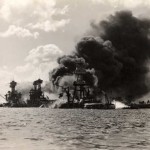 As the 73rd anniversary of the Japanese attack on Pearl Harbor dawns, I have to wonder why it is that the United States always feels that the other side must attack us first, and only then can we attack them. I know this is not always the case, but it seems like that is often the case. We try to be the peacemakers, and going to war is never something that we take lightly. Killing people is a horrible step to take. So, we always give warning after warning before we finally move, and even then it is usually too late to be the first to strike. I understand that the one who strikes first often looks like the bad guy, but it also seems like so often we are given much advance warning that a strike is eminent, and yet we wait…usually until after the attack happened and many people are dead, and the rest of us, while really angry, are too busy picking up the pieces to think about an immediate retaliatory strike.
As the 73rd anniversary of the Japanese attack on Pearl Harbor dawns, I have to wonder why it is that the United States always feels that the other side must attack us first, and only then can we attack them. I know this is not always the case, but it seems like that is often the case. We try to be the peacemakers, and going to war is never something that we take lightly. Killing people is a horrible step to take. So, we always give warning after warning before we finally move, and even then it is usually too late to be the first to strike. I understand that the one who strikes first often looks like the bad guy, but it also seems like so often we are given much advance warning that a strike is eminent, and yet we wait…usually until after the attack happened and many people are dead, and the rest of us, while really angry, are too busy picking up the pieces to think about an immediate retaliatory strike.
That was exactly where the United States found itself on December 7, 1941. We had warned Japan over and over, and with the Hull Note came the final warning. Even the fact that we knew that they would not comply, and we were in essence declaring war on Japan, we trusted them to move slowly…hoping for them to have a change of heart or something. They, on the other hand, acted almost immediately…or at least as immediate as they could back in 1941. They sent their strike force toward Pearl Harbor, while also sending a decoy strike force toward Thailand, in an effort to throw us off. Convinced that Japan was planning an attack on Thailand, President Roosevelt sent Emperor Hirohito a telegram, requesting that “for the sake of humanity,” the emperor intervene “to prevent further death and destruction in the world.” We were trying to be the peacemakers.
After sending the telegram, President Roosevelt was enjoying his stamp collection with his personal advisor, Harry Hopkins, and they were discussing the Japanese refusal to honor the Hull Note. Hopkins suggested that America should strike first, but President Roosevelt insisted that we could not do that. In reality, it was already to late for us to strike first. The Japanese were already on their way to attack Pearl Harbor, and a significant portion of the Pacific Fleet was there, anchored like sitting ducks, waiting for the attack. The ambush would take out 18 U.S. ships. Those destroyed, sunk, or capsized were the Arizona, Virginia, California, Nevada, and West Virginia. More than 180 planes were destroyed on the ground and another 150 were damaged, leaving only 43 planes operational. The American casualties totaled more than 3,400, with more than 2,400 killed…1,000 on the Arizona alone. The Japanese lost fewer than 100 men.
It seems to me that it is so often the side that strikes first…swiftly and with the element of surprise…that fares the best in the end. The side who was unaware, or didn’t heed the warning signs was slaughtered. We have one of the greatest military forces on the face of the earth here in America, so should we really ever be taken by surprise like that? I don’t think we should. I believe that if the strongman gets so sure of his might that he forgets the need to be watchful and wise, then when he least expects it, the strongman is caught unaware, and can be taken…even if his might should have prevented it. The United States has long been that strongman, and yet it seems that because of our hesitation to strike first, we are attacked over and over without warning. Then and only then, it seems, will we attack them in retaliation.
It is a dilemma I suppose, and maybe that was where President Roosevelt was coming from. We are the bad 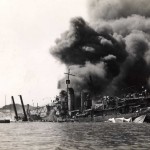 guys with the world if we attack first, and we are the bad guys with our own nation if we do not attack first. And, to top it off our intelligence isn’t always as reliable as it needs to be, so sometimes, such as on December the 7th, 1941, we are caught off guard, and completely by surprise, when we trusted an enemy to be as honorable as we try to be, and they feel no such obligation to honor. I guess that while we don’t like it when we are attacked without provocation, we must nevertheless, do the honorable thing, and not attack just because we anticipate an attack on us. If we were to do that, we would be no different than the nations we have to go to war with because they have invaded some other nation. Still, it is so hard to always be the nation that does the right thing, when we really don’t trust our enemies…because we know better.
guys with the world if we attack first, and we are the bad guys with our own nation if we do not attack first. And, to top it off our intelligence isn’t always as reliable as it needs to be, so sometimes, such as on December the 7th, 1941, we are caught off guard, and completely by surprise, when we trusted an enemy to be as honorable as we try to be, and they feel no such obligation to honor. I guess that while we don’t like it when we are attacked without provocation, we must nevertheless, do the honorable thing, and not attack just because we anticipate an attack on us. If we were to do that, we would be no different than the nations we have to go to war with because they have invaded some other nation. Still, it is so hard to always be the nation that does the right thing, when we really don’t trust our enemies…because we know better.

